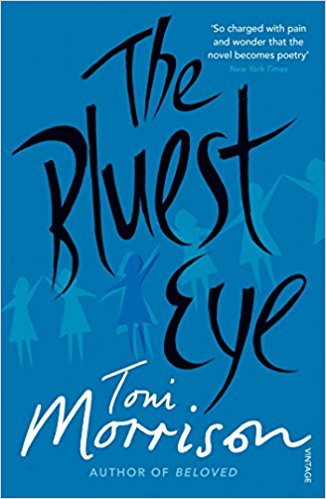

As an African American writer, Morrison is influenced, to a great extent, by the "major characteristics of Black art" and employs them in her fiction (Morrison, 1984:199). In this regard, Neal argues that " the black art is the aesthetic and spiritual sister to the black power… the black art and the black power concept both relate broadly to the Americans' desire for self-determination and nationhood"( 1968:38). So they determined to reclaim their identity through art. The matter of identity became central for African American writers because their culture was disrooted during slavery they lost whatever characteristic of identity. Her "project of writing is outside the white gaze…, she credited the complexity and originality of African American life"(Bowers, 2010:38). She loved storytelling and became very keen to portray black communities in her novels. In this case, all" black lore, black music, black language and all the myths and rituals of black culture were prominent elements in the early life of Morrison" (McKay,1983:139). Her father was racist because he tasted bitterness of racism, so he despised whites and her mother told her folktales and stories sang both jazz and opera, also her grandfather was fond in playing the violin. She grew up soaked in the African American music from spiritual and work song to blues and jazz. Morrison's family, who migrated from the black south to the black north, watered her self-esteem and cultural identity.

In her town, she was raised in a tight knit black community. She has highly contributed to the awareness of African American literature. Morrison, who is a well-known African- American writer, was born in Lorain, Ohio. Introduction: Biographical and Literary Background Key words: Toni Morrison, primer, "The Bluest Eye", jazz, improvisation,Ĭall and response. On the other hand, whites should respect and admit the cultural and humane existence of the other and realize the merit of the black culture. Morrison sends a message of moral content to blacks as well as whites: On the one hand, blacks, particularly those who immersed in the white ideology, have to wake up and realize the value of their culture, heritage and language in protecting their black identity.

The study reveals the aesthetic purpose beyond such reproducing and dismembering of "Dick and Jane" narrative. She repeats the paragraph three times which are highly different from each other, then dismembers it into pieces that appear as headings to some chapters of the novel. In her novel "The Bluest Eye", the African-American writer Toni Morrison cuts an expert of "Dick and Jane" narrative and uses it as a prologue. Through such an educational system, the white dominant culture exerts its authority in oppressing black people.
THE BLUEST EYE PLOT SUMMARY HOW TO
It educates children how to read and they hear it from the very beginning of their lives. The focus of this paper is the narrative mechanism of employing a paragraph of "Dick and Jane" Reader which was popular in children schools in 1940s in the American United States. Facet One: Representations of "Dick and Jane" Narrative: Ideals, Mimics and Cast offsĢ.2 Facet Two: The Third pastiche: an Urge of Unity (Collectivity)Ģ.3 Facet Three: Equal Function: Dismembering of Dick & Jane Primer & that of the White Doll as an aesthetic FunctionĢ.4 Facet Four: Musicality of "Dick and Jane" Primer Introduction: Biographical and Literary BackgroundĢ.1.


 0 kommentar(er)
0 kommentar(er)
